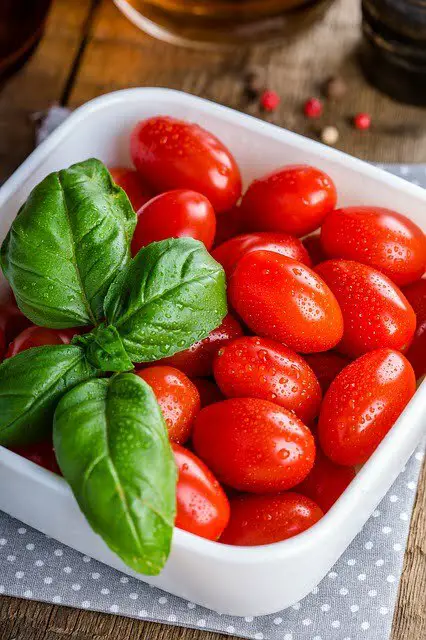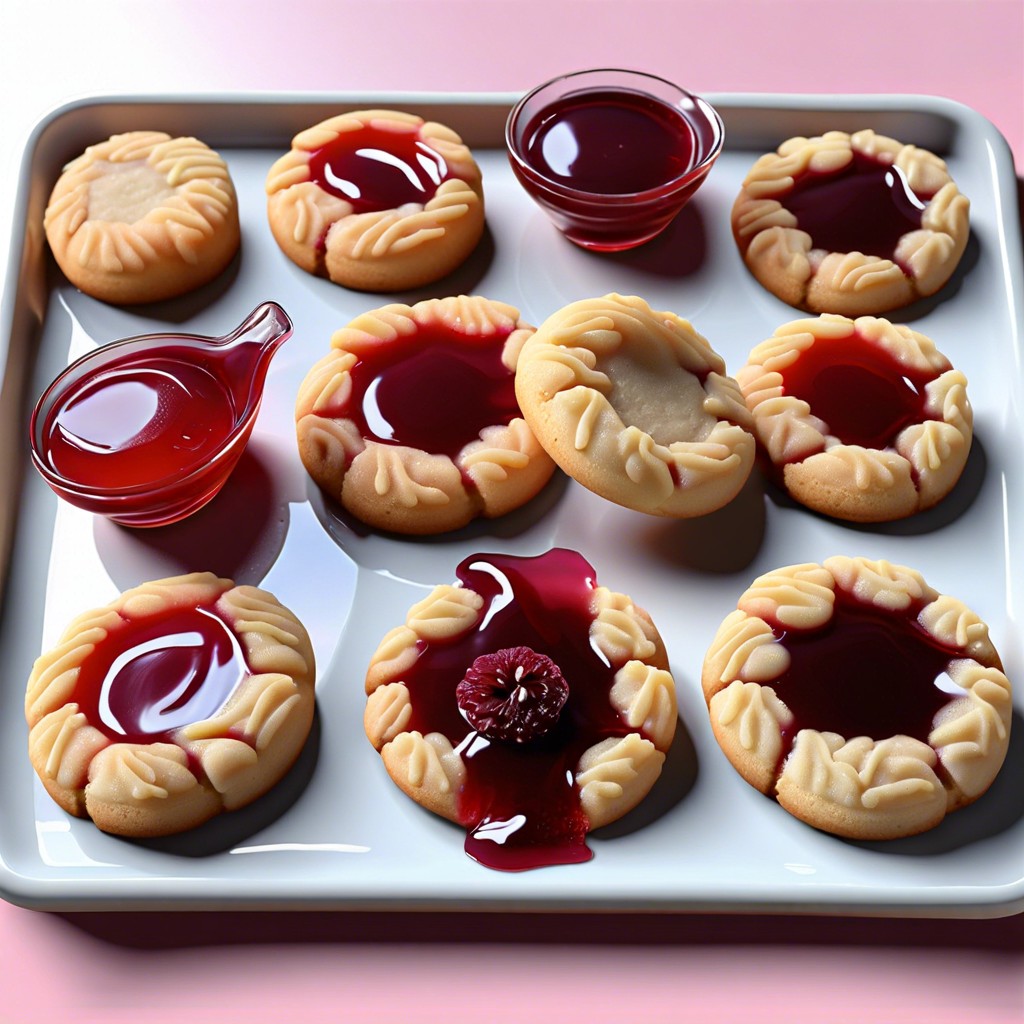An appetizer salad is a small, light dish typically served before the main course to stimulate the appetite. It usually consists of fresh vegetables, fruits, or a combination of both, often accompanied by dressing or vinaigrette.
Appetizer salads are often overlooked in the world of culinary delights. However, they can be the perfect way to start a meal or even a great standalone dish.
These small but mighty salads are packed with flavor and nutrition, making them an excellent choice for health-conscious foodies. In this blog post, we’ll explore what exactly an appetizer salad is and why you should consider adding them to your menu.
From classic Caesar salads to creative fruit and nut combos, we’ve got you covered with all the delicious details! So sit back, grab a fork, and let’s dive into the world of appetizer salads!
Definition of Appetizer Salad

It can be made up of various ingredients, including vegetables, fruits, nuts and seeds. The purpose of an appetizer salad is to stimulate the appetite and prepare diners for their main course.
Unlike other salads that may be served as part of the main course or as dessert, an appetizer salad serves a specific function in meal planning. It’s meant to whet your appetite without filling you up too much so you can enjoy your entree fully.
Appetizers salads are often light and refreshing with simple dressings or vinaigrettes that complement rather than overpower their ingredients’ natural flavors. They’re also typically smaller in size compared to other types of salads since they’re only intended to serve as starters.
Purpose of an Appetizer
It’s a small dish that can be served before or alongside other courses, such as soup or pasta. Appetizers are meant to whet your appetite and get you excited about what’s coming next.
In addition to stimulating your taste buds, appetizer salads also serve as a way to introduce new flavors and ingredients. They can be used as a platform for experimentation with different combinations of fruits, vegetables, nuts, cheeses, dressings and more.
Appetizer salads are also great conversation starters at dinner parties or social gatherings. They provide guests with something light yet flavorful while they mingle before sitting down for the main meal.
History of Appetizer Salads
These early versions consisted mainly of greens and herbs dressed with vinegar or oil. In the Middle Ages, salads became more elaborate and included fruits, nuts, and flowers.
During the Renaissance period in Europe, salad-making became an art form. The French developed a love for lettuce-based salads while Italians preferred tomato-based ones.
Appetizer salads gained popularity in America during the 1920s when restaurants began serving them as part of their menus.
Today’s appetizer salad is much more diverse than its predecessors; it includes various ingredients such as seafood, meat slices or cubes (such as chicken), cheese crumbles (like feta), beans (such chickpeas) among others that are combined with vegetables like tomatoes cucumbers carrots etc., making it not only delicious but also nutritious.
Differentiating Appetizer Salads From Main Course and Dessert Salads
Appetizer salads are designed to whet the appetite and prepare diners for the main course. They’re typically light in flavor and texture so as not to overwhelm or fill up guests before their entrée arrives.
Main course salad is usually more substantial than an appetizer salad since it serves as the primary dish of a meal rather than just an introduction. These types of dishes often include proteins such as chicken or fish along with heartier vegetables like roasted root vegetables or grains like quinoa.
Dessert Salads are sweet treats that feature fruits, whipped cream, gelatin desserts among other ingredients. They’re typically served after dinner but can also be enjoyed on their own as a refreshing snack.
Characteristics of an Appetizer Salad
An appetizer salad is typically small in size, with a light and refreshing taste that stimulates the appetite without filling you up too much before the main course. It should be visually appealing, with bright colors and textures that make it look as good as it tastes.
Another characteristic of an appetizer salad is its simplicity. Unlike main course salads which may have several ingredients or complex dressings, an appetizer salad usually has only a few key components to keep things simple yet flavorful.
The dressing used on an appetizer salad should complement rather than overpower the flavors of the ingredients used in making it. A vinaigrette or light dressing works well for most types of salads because they add flavor without being too heavy.
Types of Appetizer Salads
Some popular options include Caesar salad, Caprese salad, Greek salad, Waldorf Salad and Cobb Salad. Caesar salads typically feature romaine lettuce topped with croutons and Parmesan cheese while Caprese salads consist of fresh mozzarella cheese layered between slices of ripe tomatoes drizzled with olive oil.
Greek salads often contain feta cheese along with cucumbers, olives and red onions while Waldorf Salads combine apples or grapes mixed in a creamy dressing made from mayonnaise or yogurt. Finally the Cobb Salad is a hearty option that includes bacon bits along with hard-boiled eggs on top.
Four Categories of Salads
Green salad is the most common type of salad that consists of leafy greens such as lettuce or spinach. Bound salad refers to a mixture of ingredients held together by a thick dressing like potato or macaroni salad.
Vegetable-based salas include coleslaw and caprese while fruit-based ones feature fruits like berries and melons.
Each category has its unique characteristics in terms of taste, texture and nutritional value. For instance, green salads are often low in calories but high in fiber while bound-salads tend to be more filling due to their higher fat content from mayonnaise or sour cream dressings.
International Variations
Different countries have their own unique variations of appetizer salads that reflect their culture and cuisine. For example, in Greece, a traditional Greek salad is made with fresh tomatoes, cucumbers, onions, feta cheese and olives drizzled with olive oil and sprinkled with oregano.
In Thailand, a spicy papaya salad called “Som Tam” is made from shredded green papaya mixed with chili peppers and fish sauce.
In Japan’s Izakayas (Japanese pubs), edamame beans or seaweed salad are often served as an appetizer to accompany drinks like sake or beer. In Italy’s Caprese Salad – sliced ripe tomatoes layered between slices of mozzarella cheese topped off by basil leaves – makes for a refreshing starter dish during hot summer months.
Key Components of a Salad
First and foremost, the base of your salad is crucial. This can be anything from leafy greens like spinach or arugula to heartier options like quinoa or pasta.
The base provides the foundation for your dish and sets the tone for its overall flavor profile.
Next up are toppings! These can range from fresh fruits and vegetables to nuts, seeds, cheeses, meats or seafood depending on what type of salad you’re making. Toppings add texture and depth of flavor while also providing additional nutrients.
Finally – dressing! Dressing is what brings all these ingredients together into one cohesive dish by adding moisture as well as enhancing flavors with acidity (vinegar), sweetness (honey) saltiness (soy sauce) etcetera). There’s no right way to dress a salad; it all depends on personal preference!
Popular Appetizer Salad Ingredients
The key is to choose ingredients that complement each other in flavor and texture while also providing a visually appealing presentation. Some of the most popular ingredients for appetizer salads include:
- Greens: Lettuce, spinach, arugula, kale
- Vegetables: Tomatoes, cucumbers, carrots, bell peppers
- Fruits: Berries (strawberries or blueberries), oranges or grapefruit segments
- Nuts and Seeds: Almonds or walnuts; sunflower seeds or pumpkin seeds.
- Cheese: Feta cheese, goat cheese etc.
These ingredients can be combined in various ways depending on personal preference and taste preferences of your guests. For example you could create a classic Caesar salad with romaine lettuce leaves topped with croutons, parmesan shavings dressed with creamy Caesar dressing.
Or you could opt for something more exotic like an Asian-inspired salad made from mixed greens topped with mandarin orange slices, sliced almonds tossed in sesame ginger vinaigrette.
Dressing Choices
The right dressing can elevate the flavors of your ingredients and bring everything together in a harmonious blend. There are countless options when it comes to dressings, from creamy ranch to tangy vinaigrettes.
When choosing a dressing for your appetizer salad, consider the flavor profile you’re going for. If you want something light and refreshing, opt for a citrus-based vinaigrette or simple olive oil and vinegar combination.
For those who prefer creamier dressings with more depth of flavor, try blue cheese or Caesar dressing.
It’s also important to keep in mind that some dressings may not pair well with certain ingredients in your salad. For example, if you have fruits like strawberries or oranges in your appetizer salad mix then avoid heavy cream-based dressings as they might overpower their delicate taste.
Presentation Styles
The way a dish looks can be just as important as how it tastes, and this is especially true for salads. There are several presentation styles that you can use to make your appetizer salad look visually appealing and enticing.
One popular style is the composed salad, where each ingredient of the salad is arranged in an attractive manner on a plate or platter. This style allows for more creativity in terms of design and presentation.
Another option is the tossed or mixed salad, which involves combining all ingredients together before serving them in bowls or plates. This method works well with smaller portions but may not be ideal if you want to showcase specific ingredients.
There’s also the layered approach where different components are stacked on top of one another creating an eye-catching display that will impress guests at any dinner party!
Preparing Appetizer Salads
The key is to keep things simple and fresh. Start by selecting high-quality ingredients that are in season and readily available at your local market.
Wash all produce thoroughly before use, then chop or slice them into bite-sized pieces.
Next, consider the presentation of your salad. A well-presented dish can make a big difference in how it’s perceived by guests.
Consider using a variety of colors and textures for visual appeal.
Dressing is another crucial element when preparing an appetizer salad as it adds flavor and moisture to the dish while tying together all its components seamlessly. You can choose from various dressing options such as vinaigrettes or creamy dressings depending on what complements your chosen ingredients best.
Timing is everything when serving an appetizer salad; you want to ensure that they’re served chilled but not too cold so that their flavors come through fully without being muted by extreme temperatures.
Tips for Preparation
First and foremost, make sure your ingredients are fresh. This will ensure that your salad is flavorful and nutritious.
Secondly, consider the texture of each ingredient when selecting them for your salad – mix crunchy with soft or chewy textures to add interest.
Another tip is to keep things simple – don’t overload your salad with too many ingredients as this can be overwhelming for the palate. Instead, choose a few key components that complement each other well.
Presentation also plays an important role in creating an appealing appetizer salad. Consider using different colors and shapes of vegetables or fruits to create visual interest on the plate.
Timing is everything! Make sure you prepare your dressing ahead of time so it has time to meld together before serving over greens or other veggies/fruits in order not only enhance flavor but also prevent sogginess from occurring due prolonged exposure between wet/dry elements within dish itself.
Common Mistakes
One of the most significant errors is using too many ingredients or overcomplicating the dish. Remember, an appetizer salad should be light and refreshing, not heavy and overwhelming.
Another mistake is not properly washing or drying your greens before assembling your salad. This can lead to a soggy mess that no one wants to eat! Take the time to wash each leaf thoroughly and dry it with paper towels or a salad spinner.
Many people forget about seasoning their salads properly. A little salt and pepper can go a long way in enhancing flavors without overpowering them.
Don’t forget about presentation! While taste is essential in any dish, how you present it also matters. Take some time to arrange your ingredients thoughtfully on the plate for maximum visual appeal.
Health Benefits
These salads are typically made up of fresh vegetables and fruits, which provide essential vitamins, minerals, and fiber to the body. The high fiber content in appetizer salads helps regulate digestion and keeps you feeling full for longer periods.
Moreover, many ingredients used in appetizer salad recipes have anti-inflammatory properties that can help reduce inflammation throughout the body. For example, leafy greens like spinach or kale contain antioxidants such as vitamin C and beta-carotene that protect cells from damage caused by free radicals.
Incorporating protein-rich ingredients like nuts or seeds into your salad can help keep blood sugar levels stable while providing energy to fuel your day. And if you’re watching your weight or trying to lose a few pounds? Appetizer salads make an excellent low-calorie option without sacrificing taste!
Dietary Considerations
For example, vegetarians and vegans can enjoy many types of appetizer salads that are packed with plant-based protein sources like beans, nuts, and seeds. Those who follow a gluten-free diet can also find plenty of options as long as they avoid croutons or other wheat-based ingredients.
For individuals watching their calorie intake or trying to lose weight, an appetizer salad is an excellent choice because it’s typically low in calories but high in fiber and nutrients. However, if you’re on a low-carb diet such as the keto diet or Atkins Diet then you’ll want to be careful about which ingredients you choose for your salad.
Pairing With Entrees
The key is to choose the right salad that complements the flavors of your main course. For example, if you’re serving a rich and heavy meat dish like steak or lamb, consider pairing it with a light and refreshing salad such as mixed greens topped with citrus fruits or berries.
On the other hand, if you’re serving seafood dishes like grilled salmon or shrimp scampi, try pairing them with an appetizer salad that has more substantial ingredients such as avocado slices or roasted nuts for added texture.
When it comes to pasta dishes like lasagna or spaghetti bolognese, opt for an appetizer salad that has bold flavors and hearty ingredients such as sun-dried tomatoes and olives. This will help balance out the richness of these classic Italian dishes.
Serving Suggestions
They can be plated individually or presented as a shared platter for guests to help themselves. Appetizer salads also make great additions to buffets, potlucks, and picnics.
When serving appetizer salads at home, consider pairing them with complementary dishes such as soups or sandwiches. For example, a light Caesar salad pairs well with a hearty bowl of tomato soup while an arugula salad complements grilled chicken paninis.
For formal events like weddings or corporate dinners, opt for elegant presentation styles such as individual servings in martini glasses or small bowls garnished with edible flowers.
No matter how you choose to serve your appetizer salad dish up some creativity! Experimenting with different ingredients and presentation styles will keep things interesting for both you and your guests alike!
FAQ
How do you differentiate appetizer salad from accompaniment salad?
Appetizer salad stimulates the appetite and is served at the beginning of the meal, while accompaniment salad is served with the main course on either a dinner or salad plate.
What is an example of an appetizer?
An example of an appetizer is shrimp cocktail.
Is tossed salad an appetizer?
Yes, a tossed salad can be considered an appetizer, as it is a delicious and nutritious way to eat less before the main course.
What are the typical ingredients found in popular appetizer salads?
Typical ingredients found in popular appetizer salads include lettuce, tomatoes, cucumbers, onions, olives, and various dressings.
How does the portion size differ between appetizer salads and main course salads?
Appetizer salads are usually smaller in portion size compared to main course salads.
What types of dressings and sauces are typically used in appetizer salads?
Types of dressings and sauces typically used in appetizer salads include vinaigrettes, creamy dressings, and various oil-based or herb-infused sauces.




